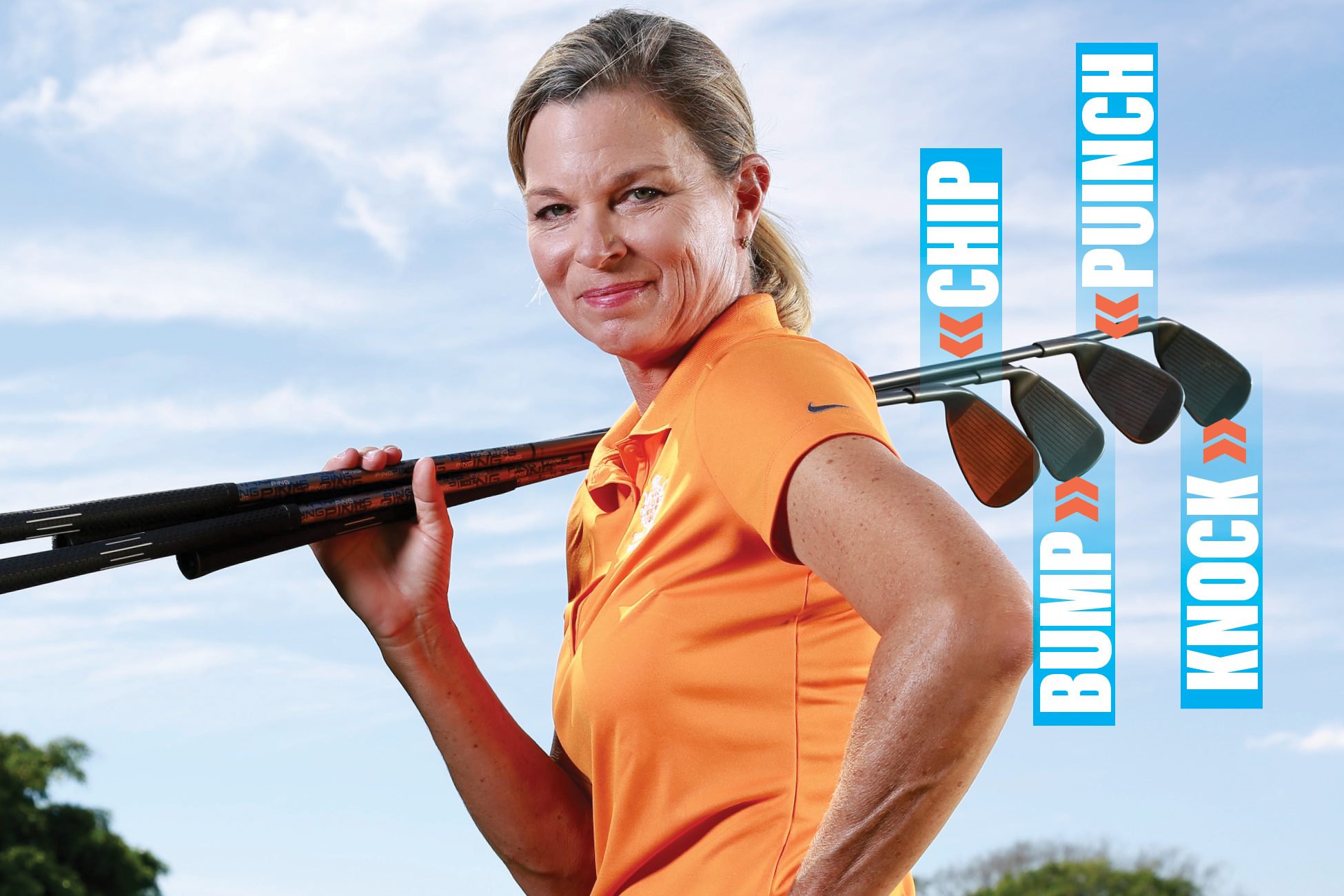BEVERLY HILLS, CA - JUNE 17: Photographer Kevin O'Leary Hosts Preview For His Photo Exhibit "Irreconcilable Images" at Timothy Yarger Fine Art Inc on June 17, 2016 in Beverly Hills, California. (Photo by Tommaso Boddi/WireImage)
WIREIMAGEIn recent years, Shark Tank host Kevin O’Leary has transitioned from a crypto skeptic to an enthusiast, investor and evangelist. He holds multiple positions in the industry and has also become a paid spokesperson and endorser for crypto exchange FTX. In this interview we discuss how his background as a venture capitalist and software investor informs his financial decisions, ways that the regulatory landscape has evolved over the years and where crypto fits into a diversified portfolio. He also has some very interesting thoughts related to NFTs how investors should weight bitcoin v. ether.
Forbes: How do you approach your crypto investments?
O’Leary: Ether is my largest position, bigger than bitcoin. It’s because so many of the financial services and transactions are occurring on it. Even new software is being developed like Polygon that consolidates transactions and reduces the overall cost in terms of gas fees on Ethereum. I’m an investor in that as well. So to me, the best way to look at this, and I get questioned on this issue all the time, do you like bitcoin over ether? Do you like solana over polygon, hedera, all of that; I look at things differently. I don’t think about bitcoin as a coin or token, I think about it as software. Bitcoin is software. Ethereum is software. Hedera is software. I grew up in my entire career investing in software development teams. That’s what I did at and after the Learning Company. I work with software developers, coders and programmers, and that’s where I deploy capital all the time. So I’m just viewing the entire crypto industry as software development teams and I spend my time speaking with them—I just came back from Dubai where I met the Polygon team—and make investment decisions based on the skills of those software engineers. I know the market is going to be the market, it will determine the winners and the losers of these platforms. But at the end of the day, it’s the really strong creative software engineers that you want to bet on. And that’s what I’ve done.
Excerpted from Forbes CryptoAsset and Blockchain Advisor. Subscribe here.
Forbes: What does your portfolio look like today?
O’Leary: I get asked that all the time and what I’ve decided to do is just publish it, which I am going to do near the end of this month. I have many positions now and I’m going to disclose everything because I don’t want to be ever accused of promoting a token or a coin. I don’t like that. I make long-term investments here, and so I will be disclosing that shortly. But I’ve mentioned some of the ones I own. I own Hedera, Polygon, Bitcoin, Ethereum, Solana, Serum—these are bets on software development teams and there are many, many use cases for them. I think we’re going to see a lot of different use cases emerge over time. For example, I’m not sure that Ethereum is the best platform for financial services transactions because it’s too slow. So how do you fix that? Or do you use Polygon to consolidate transactions. Maybe it’s too expensive as well for some countries like India, so I want to make different bets.
Forbes: What characteristics or qualities will separate the winners from the losers?
O’Leary: At the end of the day, what determines the platform’s success and value is the speed and level of adoption. That occurs when the team has developed a platform that solves an economic problem. I always say this about digital currencies and digital platforms. What problem are you solving? Are you enhancing a transaction, reducing friction in financial markets? Accelerating transaction speed or accuracy? Or authenticating them? What are you doing that has economic value? So I would argue long term coins that have no economic value are that because they don’t solve anything or create any value. I’m very skeptical of meme coins long term. The reason Ethereum is so large now is because it was first and it was widely adopted. Now, because some of its shortcomings are being noticed by certain sectors of the economy, these other teams, Polygon, Solana and others are saying, well, it’s not good enough for what we’re doing. And we’re going to make some changes here. That is very much worth investing in.
Forbes: How would you define a bubble and do you think we are in one?
O’Leary: That’s a great question. I’ve watched bubbles grow and pop and everything else. The thing to realize is, the market is the market. No one person can manipulate it, even though people claim they can. It’s millions of decisions being made every second in terms of what something is worth. And it applies to every market, whether it’s tulips, watches, bitcoin, real estate or gold. It’s the same dynamics, when you have a large participation in the asset class and millions of people buy and sell it. The only thing I trust is the market price. Because you can’t say it’s overvalued or undervalued, the market determines that for you. You can make a long-term bet that it will appreciate over time for various reasons. But when you start to say something as a bubble, you’re effectively saying you’re going to do some market timing; that you know something that everybody else doesn’t know. And once in a while, you can be right. But over the long run, it’s a fool’s game and you can’t win. My attitude about this is allocation and diversification. So if you tell me that bitcoin is in a bubble and overvalued, you may be right. But it doesn’t really matter to me in terms of allocating to bitcoin, it’s going to be allocated to because it is an asset that millions of people own. And its market price is being determined by the 24 hours a day. I happen to think it’s an asset, not a currency. I like the software development underneath it. I think all the issues around ESG are going to get solved in the next couple of years. And it’s going to be more efficiently mined. But I love the market being the market. So that’s a really long answer to say, you can’t know when it’s a bubble, you simply can’t. And if you think you do, you’re absolutely wrong.
Forbes: How do you think crypto fits into a diversified portfolio for my readers?
O’Leary: My answer is always the same. It’s a binary decision. First of all, many people are still skeptical about it and are not on board, so they don’t have any allocation problems. For those of us who have changed our minds, and I’m one of those constituencies, I have decided that this is a real asset class, that the software development has economic meaning, and I should be an investor in it. So diversification is my number two issue. Now in the stock and bond world, where these assets have been around for hundreds of years, I have very simple rules that mandate how I own them. I never let one stock become more than 5% weighting in any portfolio and I never let a sector (of which there are 11 in the S&P) ever become more than 20%. I am using the same rules now that I use for them. Some people say to me, why don’t you just own bitcoin and ethereum, everything’s correlated to the price of those. I don’t believe that to be true. First, there are many other economic applications, software, level 1/2 blockchains that have nothing to do with bitcoin that I want to invest in. So what I’m trying to do is build a portfolio—at some point it might get to 20% of my operating company—but right now, it’s about 10.5%. But within that portfolio, there’s no one token coin or chain that’s more than 5% of that portfolio. So yes, I am actively adding and trimming based on volatility. And we’ve had lots of that in the last couple of weeks. And secondly, I’m doing a lot of staking. Most of my positions are now being staked, and I use the FTX platform for that (NOTE: O’Leary is a paid spokesperson). And I also hold a significant and material position in USDC, because I am now starting to pay for assets and get paid in the stablecoin. So it’s become another currency in my portfolio. And I stake that as well. I’m working with Circle on that. I was one of the very first corporate accounts open there.
Forbes: As we are conducting this interview, Circle CEO Jeremy Allaire is testifying in front of the House Financial Services Committee to address crypto in general, but also discuss some key hot button issues such as stablecoins. Circle has become more transparent about its USDC reserves in recent months. How do you see the outlook for USDC and stablecoins?
O’Leary: I’m glad Jeremy is taking this bull by the horns and wanting to be part of creating policy for stablecoins. They are here to stay. I remember when I bought my first USDC, I think he had 2 billion under management or issued, but now it’s above 30 (Note: USDC’s market capitalization is now $40.2 billion). So it’s been adopted widely by lots of corporate entities as well. But I would prefer that it’d be regulated, I would prefer that the rules be set by the regulator so that I can increase my exposure to it. And frankly, I’m not speaking on his behalf, I’m just speculating. If he had to become regulated like other banks, he would probably do that (Circle applied for a banking license on TK). Just to be transparent, I am going to be an investor in Circle’s PIPE (private investment in public entity–its plan to go public via a SPAC merger next quarter). I’ve already decided that the stablecoin I’m going to use is USDC. I do not want to own any asset, and I don’t, that the SEC is investigating or litigating. I want nothing to do with that, I am not a crypto cowboy.
Forbes: There is always a chance that the SEC could determine some of the other assets you mentioned, such as HBAR, SOL or MATIC as securities. Do you still feel comfortable holding those?
O’Leary: The minute that information gets out (suggesting they are securities) I will want nothing to do with them. If I had a position I would sell it. I have no interest in going into conflict with regulators over my crypto portfolio. I want to be 100% compliant. That’s my mantra every day and that’s because I want to play in the institutional market. I’m not interested in being some guy sitting at a desk with his iPhone trading bitcoin; that’s not what I do. And so this is the beginning of a very long process by which the regulator will set rules because everybody knows this asset class is not going away.
Forbes: You briefly touched on this earlier, but can you describe the due-diligence process you go through when deciding whether to invest in a new token. Also, do you have any preference for Level 1/Level 2 tokens or look for a certain degree of traction before investing?
O’Leary: I have made investments in nascent tokens very early in their development. Same with Level 1 or Level 2 platforms. When I hear of a new team or a new idea, I simply call them up and either do a zoom call or physically meet with the team if I’m going to be in that country. Sometimes I acquire a control position, sometimes I just take a shareholding position. Sometimes I buy them with one of my public companies. I do all the above, but I go back to the idea that this is no different than when I was at the Learning Company looking at teams that were building educational software or gaming software. There’s no difference at all to me. I’ve been doing this for 35 years, and crypto is no different. It’s a very comfortable space to be in for me. I consider it software development and all the other social media hype, all the blogs, this dogecoin over bitcoin and yada, yada, yada, it’s all irrelevant to me. What matters to me is, what’s the software do? What problem does it solve? Where’s the economic value and who’s maintaining the code, that’s how I look at it?
Forbes: To finish up, I’d love to get your thoughts on NFTs.
O’Leary: I think non-fungible tokens are going to be bigger than bitcoin. They offer so much value around authentication, inventory management and all kinds of use cases in different asset classes. I prefer NFTs tied to hard assets, physical assets; the one that I’m working on developing a white paper for is the watch industry. I’ve invested in that because we have so much fraud in watch collecting, which we can eliminate by using some very high resolution scanning of dials linked to NFTs, so that the watchmaker can identify what they made, when they made it and who owns it. I made a material investment in Jordan Fried’s company, Immutable Holdings, which owns NFT.com, which he’s launching in January, as well as WonderFi, which is a company that’s consolidating assets in the crypto space. They’re both large positions for me and I like the management teams, but they are focusing on creating value around the NFT market—curating them, creating them, managing them. There’s a lot of work going on in making these ubiquitous and very liquid so that an NFT can trade on any blockchain, whether it’s Solana, Ethereum, HBAR, whatever. These assets are going to be very big and I think 2022 is going to be the year of the NFT.
Forbes: Thank you.
Excerpted from December issue of Forbes CryptoAsset & Blockchain Advisor.
I am director of research for digital assets at Forbes. I was recently the Social Media/Copy Lead at Kraken, a cryptocurrency exchange based in the United States. Before joining Kraken I served as Chief Operating Officer at the Wall Street Blockchain Alliance, a non-profit trade association dedicated to the comprehensive adoption of cryptocurrencies and blockchain technologies across global markets. Before joining the WSBA, I was the Lead Associate within the Emerging Technologies practice at Spitzberg Partners, a boutique corporate advisory firm that advises leading firms across industries on blockchain technology. Previously I was Vice President/Lead Strategy Analyst at Citi FinTech, where I drove strategic and new business development initiatives for Citigroup’s Global Retail and Consumer Bank business across 20 countries. I also served five years as a Senior Intelligence Analyst at Booz Allen Hamilton supporting the U.S. Department of Defense. I have a B.S. in Business Administration from the Tepper School of Business at Carnegie Mellon University and a M.A. in International Affairs from Columbia University's School of International and Public Affairs. Additionally, I am a Certified Information Privacy Professional (United States, Canada, and the European Union) and a Certified Information Privacy Technologist at the International Association of Privacy Professionals (IAPP).







